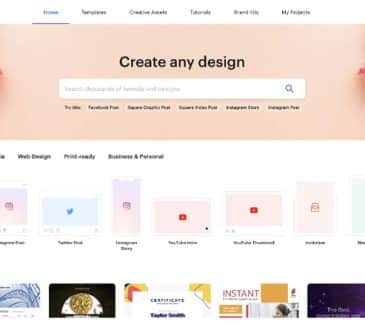Which Type of Data Should Your Business Collect?

You know that data drives business. But is quantitative or qualitative data better for your needs? The short answer is that each type can be valuable depending on your situation.
Every modern business runs on data. You and your team members probably leverage data all the time to help make better decisions. But which kind of data is suited for your situation: quantitative, qualitative, or a mix of the two?
Most companies end up leaning on both. But to make the most informed decisions, it’s important to know when to use qualitative vs. quantitative marketing research data as each has benefits and drawbacks.
Quantitative Data: Pros and Cons
Quantitative data is any kind of data that can be measured with numbers. For example, you may ask your marketing team to come up with a list of all the customers who spent between $100 and $200 last year. The list could then be ranked or otherwise categorized.
The benefit of quantitative data is that it can answer questions about quantity, frequency, percentages, and more. Plus, it can be simple to collect and parse. For example, your annual budget relies on quantitative data about revenue and expenses to represent your financial position. However, this type of data has limitations.
What quantitative data misses is the context behind the numerical data. For example, let’s say you’re looking at in-person retail sales figures in a U.S.-based brick-and-mortar store between January 2020 and May 2020. The quantitative sales figures would probably show a significant dip.
What they wouldn’t show is that the dip happened because of COVID-19 shutdowns and changing consumer behavior. You would need qualitative data to help paint the whole picture.
Qualitative Data: Pros and Cons
Unlike quantitative data, qualitative data is contextual. It looks at other factors that influence data points, such as consumers’ perceptions of your brand. When your marketing team engages in focus groups to elicit sentiment about your latest product, the team will receive qualitative data.
This type of data is wonderful for documenting opinions and emotional responses. Qualitative data can help you get a better understanding of your quantitative data. Nevertheless, qualitative data comes with some disadvantages.
In terms of what qualitative data misses, you can’t always wait for qualitative findings, as they can take a long time to verify. Additionally, you may run into the question of whether qualitative data is showing you the actual cause of an event or just a coincidental correlation. As a result, you will probably need to cross-reference your qualitative data with other data to support any hypotheses or findings.
When to Use Each Kind of Research
So is qualitative or quantitative research better? Truthfully, neither is innately better than the other. At times, quantitative data is perfectly useful to get you where you want to go. At other times, you need the context that only qualitative data can provide.
Below are some best practices when it comes to figuring out when to use qualitative vs. quantitative research, as well as when to leverage both.
- Use qualitative data to pinpoint the source of anomalies.
Have you ever seen blips in your quantitative data that can’t be explained? These blips could mean anything from threats to opportunities. You won’t know unless you undertake qualitative research.Qualitative research presents you with a fuller, richer understanding of what’s happening beneath the surface. What seems like unexplainable anomalies can often be explained when you dig deeper with qualitative data.
- Enlist quantitative data to lessen research bias.
Unfortunately, a known downside of qualitative data is that it can be influenced by bias. The bias isn’t deliberate. It’s often unconscious, such as when a researcher interprets results to confirm their hypothesis or a participant chooses what they think is a more socially acceptable response rather than an honest one. It’s just a risk of qualitative data collection methods.Backing up your qualitative findings with more objective quantitative research can improve your accuracy and reduce bias. Quantitative data can also highlight areas of bias, giving you a truer picture of your research.
- Employ qualitative data to improve messaging.
Does it feel like your content just isn’t hitting the mark? If your quantitative data shows that customer engagement is slipping, for example, you might want to try qualitative research.Through qualitative research, you can figure out if the language in your communications is unclear or confusing to consumers. Using what you discover, you can then make tweaks. Conduct A/B tests as part of your marketing campaign to make the most of your results.
- Add quantitative data research strategies to your internal studies.
Many companies like to conduct studies on a regular basis. Studies can help you make a name for your company or support the need for your product or service. Plus, you can get a bit of a media bump as well as significant backlinks if others pick up your study findings.Typically, studies include a lot of quantitative data points, as they’re easier to digest for most people. Statements like “Research shows that 48% of…” and “Findings indicate Generation Z is 10 times as likely to…” make good snippets for social media and infographic content. People like being able to see concrete numbers in “snackable,” memorable formats.
Narrowing down which type of data to use is less of a battle between which and more of a strategic decision to deploy with each unique opportunity. From improving sales numbers to gauging employee satisfaction, knowing more about how data is helpful for business — in addition to knowing which data to use when — gives you a leg up on your competition.
Written by Chad Reid.
Have you read?
Uplift at NEARCON 2022 – Taking Web3 To the Next Level by Irina Berezina.
The Only Happy Investor in the Room by Michael Peres (Mikey Peres).
Run a Medical Business? Patient Experience Should Be Your Highest Priority by Dr. Khuong Nguyen.
The Importance of Being a Wise and Mindful Leader by Dr. Ronald Alexander.
Add CEOWORLD magazine to your Google News feed.
Follow CEOWORLD magazine headlines on: Google News, LinkedIn, Twitter, and Facebook.
This report/news/ranking/statistics has been prepared only for general guidance on matters of interest and does not constitute professional advice. You should not act upon the information contained in this publication without obtaining specific professional advice. No representation or warranty (express or implied) is given as to the accuracy or completeness of the information contained in this publication, and, to the extent permitted by law, CEOWORLD magazine does not accept or assume any liability, responsibility or duty of care for any consequences of you or anyone else acting, or refraining to act, in reliance on the information contained in this publication or for any decision based on it.
Copyright 2024 The CEOWORLD magazine. All rights reserved. This material (and any extract from it) must not be copied, redistributed or placed on any website, without CEOWORLD magazine' prior written consent. For media queries, please contact: info@ceoworld.biz
SUBSCRIBE NEWSLETTER








